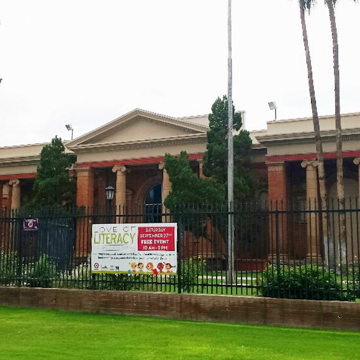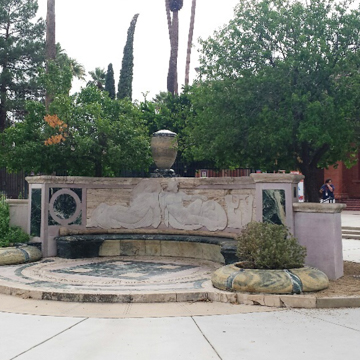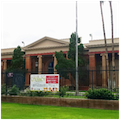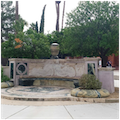You are here
Tucson Children’s Museum
Between 1883 and 1929, over 2,500 Carnegie libraries were built across the United States, Canada, Ireland, and Great Britain, funded by businessman and philanthropist, Andrew Carnegie. Tucson’s Carnegie Free Library was completed in 1901, an early example of monumental civic architecture in the city.
Architect Henry Trost moved to Tucson in 1889, after working for eight years in Chicago, purportedly for Louis Sullivan and principally as a designer of ornamental metal. Shortly after his arrival, he entered—and won—a local competition to design Tucson’s Carnegie Library. In 1900 work on this massive Beaux-Arts building began.
The library is located just south and east of the central business district, in the neighborhood of Armory Park, originally established for employees of the Southern Pacific Railroad. Today, Armory Park is fine residential district full of Late Victorian residences in a variety of architectural styles.
The library is a solid, cruciform-shaped building featuring a square portico capped by an entablature with an ornate frieze and supported by ionic columns in antis, which are repeated on the flanking wings of the primary facade. The desert-inflected color palette includes terra-cotta for the columns with a reddish-buff stone foundation and buff-colored brick. The ornamentation is plaster. The library contains a central rotunda with dome, metal roofing, cornices topped with acanthus leaves, and Greek sculptures.
After completing the Carnegie Free Library, Trost began collaborating with Robert E. Rust, who had also entered the library competition; they worked together until Rust’s death in 1905. While in Tucson, Trost designed an impressive array of buildings, completing the Santa Rita Hotel, Scottish Rite Cathedral, Willard Hotel, Steinfeld Mansion, Second Owl’s Club, and numerous private residences. His projects ranged in style from understated Mission Revival buildings to Beaux-Arts monuments like the library to Sullivanesque bungalows. Trost left Southern Arizona in 1903 and moved to El Paso, where he became the city’s leading architect, designing hundreds of buildings, including the city’s first skyscrapers and most of its downtown commercial buildings. By the time he died in 1933, there was hardly a southwestern city in which he had not worked; his firm design some 650 buildings in El Paso, Albuquerque, Phoenix, San Angelo, northern Mexico, and Tucson.
While much of the library’s original historic fabric remains, the building has suffered its share of misfortunes, including a fire that destroyed the central dome, removal of much of its ornamentation, destruction of its metal roofing, and two additions: one completed in 1938 that nearly doubled the square footage of the building, and another by Arthur Brown in 1961 that included two rectangular wings (abutting the north and south facades) and a front wall that have obscured much of the building. In 1920, a massive sculptural bench honoring Arizona pioneers (Merril P. Freeman Memorial Bench) was placed directly in front of the library. Designed by Bernard Maybeck and sculpted by Benjamin Bufano, the bench is constructed of travertine, Verde marble, and onyx, creating a colorful and somewhat oddly Romanesque focal point.
After a new main library opened on Stone Avenue in 1990, the Carnegie Free Library became home to the Tucson Children’s Museum.
References
Nequette, Anne M., and R. Brooks Jeffery. A Guide to Tucson Architecture. Tucson: University of Arizona Press, 2002.
Englebrecht, Lloyd C., and June-Marie F. Henry C. Trost: Architect of the Southwest. El Paso: El Paso Public Library Association, 1981.
Writing Credits
If SAH Archipedia has been useful to you, please consider supporting it.
SAH Archipedia tells the story of the United States through its buildings, landscapes, and cities. This freely available resource empowers the public with authoritative knowledge that deepens their understanding and appreciation of the built environment. But the Society of Architectural Historians, which created SAH Archipedia with University of Virginia Press, needs your support to maintain the high-caliber research, writing, photography, cartography, editing, design, and programming that make SAH Archipedia a trusted online resource available to all who value the history of place, heritage tourism, and learning.




